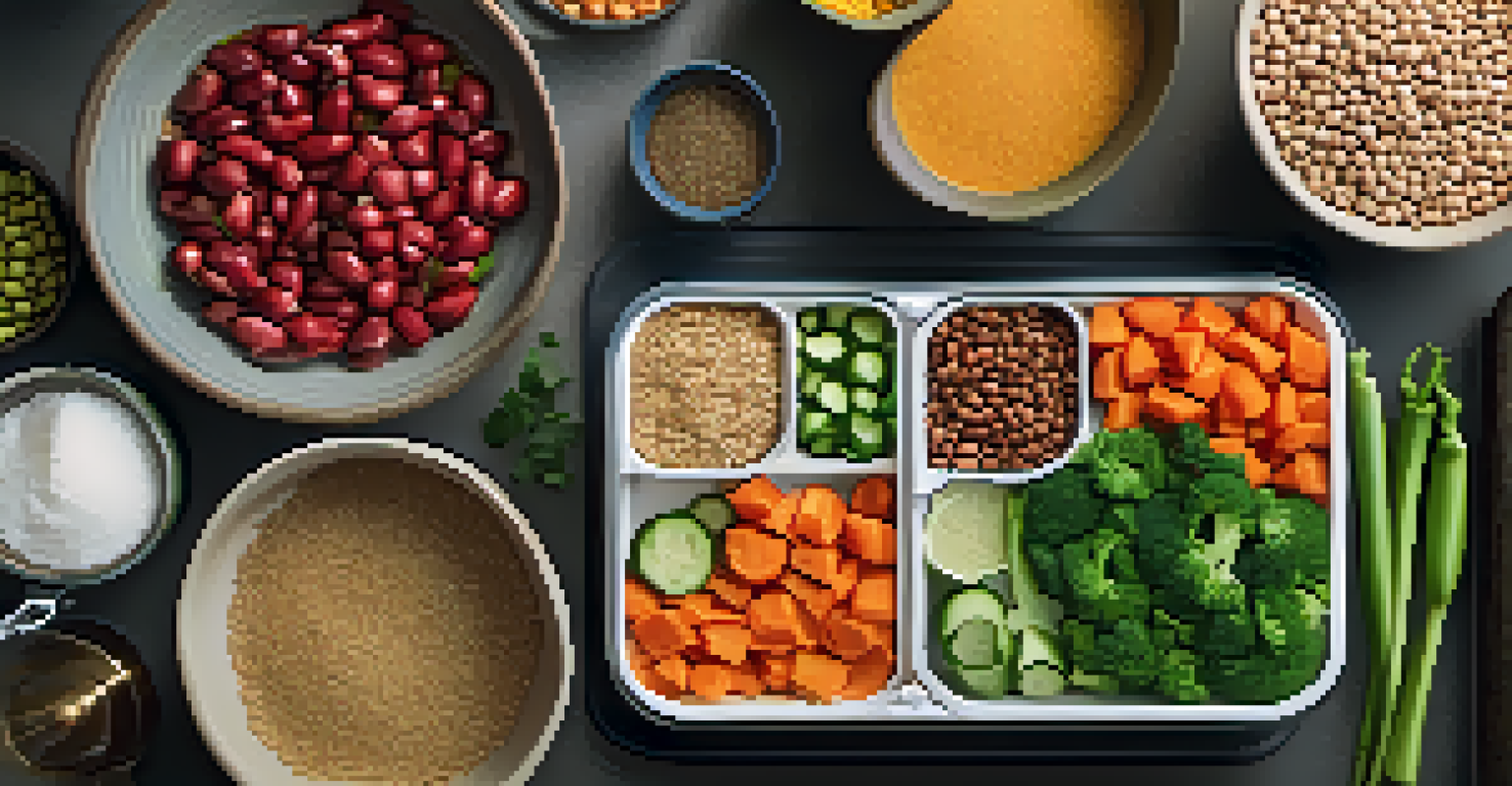How to Analyze Sugar Levels in Vegetarian Foods

Why Sugar Analysis Matters for Vegetarians
Understanding sugar levels in vegetarian foods is crucial for maintaining a healthy diet. Vegetarians often rely on fruits, grains, and legumes, which can vary significantly in sugar content. By analyzing these foods, you can make informed choices that align with your health goals and dietary needs.
Let food be thy medicine and medicine be thy food.
For instance, while fruits are a natural source of sugar, some like bananas and grapes can have higher levels compared to berries. This knowledge allows you to balance your sugar intake effectively, ensuring you get the nutrients without excessive sugar.
Moreover, being aware of sugar levels helps in preventing health issues like diabetes or weight gain. It empowers you to select foods that provide energy and satisfaction without compromising your overall health.
Reading Nutrition Labels for Sugar Content
One of the first steps in analyzing sugar levels is to read nutrition labels on food packaging. These labels provide detailed information about the amount of sugar per serving, which is crucial for understanding what you're consuming. Look for total sugars and added sugars to get a clear picture.

For example, a granola bar may seem healthy but can contain a surprising amount of added sugars. By comparing different brands and products, you can choose options that are lower in sugar and higher in nutrients.
Understand Sugar in Vegetarian Foods
Analyzing sugar levels in vegetarian foods helps maintain a healthy diet and prevents potential health issues.
Additionally, familiarize yourself with the recommended daily sugar intake, which is about 25 grams for women and 37.5 grams for men. This guideline helps you keep track of your sugar consumption throughout the day.
Identifying Natural vs. Added Sugars
Understanding the difference between natural and added sugars is essential for a balanced diet. Natural sugars are found in whole foods like fruits and dairy, while added sugars are incorporated during processing. Recognizing this distinction can help you make healthier choices.
You are what you eat, so don’t be fast, cheap, easy, or fake.
For instance, a piece of fruit may provide vitamins, minerals, and fiber alongside its natural sugars, making it a nutritious snack. On the other hand, fruit juices often contain concentrated sugars without the benefits of the whole fruit.
By prioritizing whole foods over processed options, you can enjoy the sweetness of natural sugars while reaping the health benefits that come with them.
Using Glycemic Index to Assess Sugar Impact
The Glycemic Index (GI) is a valuable tool for analyzing how different foods affect blood sugar levels. Foods with a high GI can cause rapid spikes in blood sugar, while low-GI foods provide a more gradual release of energy. This is particularly important for vegetarians who may consume a lot of carbohydrates.
For example, white bread has a high GI, whereas whole grains have a lower GI, making them a better choice for sustained energy. Incorporating more low-GI foods into your diet can help maintain stable sugar levels and improve overall health.
Read Labels to Track Sugar Intake
Nutrition labels provide essential information about total and added sugars, helping you make healthier choices.
When planning meals, consider pairing high-GI foods with low-GI options to balance their effects. This strategy not only helps with sugar management but also enhances satiety.
Incorporating Fiber to Control Sugar Absorption
Fiber plays a crucial role in controlling how sugar is absorbed in the body. Foods high in fiber slow down digestion, leading to a more gradual release of sugar into the bloodstream. As a vegetarian, incorporating fiber-rich foods can significantly benefit your sugar management.
For instance, legumes, whole grains, and vegetables are excellent sources of fiber. By combining these with higher-sugar foods, you can mitigate their impact on your blood sugar levels.
Adding fiber to your meals can also promote a feeling of fullness, reducing the temptation to snack on sugary treats throughout the day. This simple adjustment can lead to healthier eating habits.
Common Vegetarian Foods and Their Sugar Levels
Being aware of common vegetarian foods and their sugar levels is essential for informed eating. For example, certain fruits like mangoes and cherries have higher sugar content, while leafy greens and cruciferous vegetables are much lower. This knowledge helps you make better dietary choices.
Additionally, be cautious with vegetarian processed foods, such as veggie burgers and sauces, which may contain added sugars. Always check the labels and aim for whole, unprocessed foods when possible.
Incorporate Fiber for Better Health
Adding fiber-rich foods to your diet slows sugar absorption and promotes a feeling of fullness.
Creating a balanced vegetarian plate involves incorporating a variety of food groups while keeping an eye on sugar levels. This way, you can enjoy diverse flavors without compromising your health.
Practical Tips for Managing Sugar Intake
Managing sugar intake as a vegetarian doesn't have to be complicated. Start by planning your meals and snacks in advance, focusing on whole foods that are low in sugar. Preparing your meals can also help you avoid the temptation of processed options that often contain hidden sugars.
Incorporating a variety of foods ensures a balanced diet while keeping sugar levels in check. For instance, pair fruits with nuts or yogurt for a nutritious snack that satisfies sweet cravings without overloading on sugar.

Lastly, stay hydrated and opt for water or herbal teas instead of sugary beverages. This simple switch can dramatically reduce your overall sugar intake and contribute to better health.